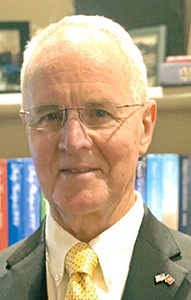James Michael Burkdoll
James Michael Burkdoll was born in Evansville Indiana on September 29, 1947, and has lived in Indiana his entire life. Corporal Burkdoll joined the U.S. Marine Corps on October 4, 1966 and served two years active duty and four years inactive reserve.
On May 26, 1967 while serving as a M-60 Machine Gunner with the 2nd Battalion, 1st Regiment, 1st Marine Division he was accompanying a 5-man patrol providing minesweeping crews along Highway 1, South of Da Nang, when a booby trap was detonated, lacerating his femoral artery. Corporal Burkdoll was bleeding out from his injury when a Navy Corpsman (CORE MEN) was able to clamp the severed artery and he was medivacked to 1st Med Battalion field hospital in Da Nang.
After being Honorably Discharged, Corporal Burkdoll resumed a civilian life which included 8.5 years with the Indiana State Police, where he was once again wounded in the Line of Duty.
Mike always felt a calling to help veterans who struggled with their combat service. In August 2009 he was introduced to Point Man which has grown from three veterans to over 600 veterans. Point Man is saving veterans lives, saving marriages and saving souls through programs like REBOOT – Combat Recovery, Greesham House, and Veterans Court. He continues to serve this organization as its Executive Director.
James Michael Burkdoll’s awards and decorations include the Purple Heart, He has also received a Commendation from President George W. Bush and the Sagamore of the Wabash from Governor Eric Holcomb for his work in supporting veterans.
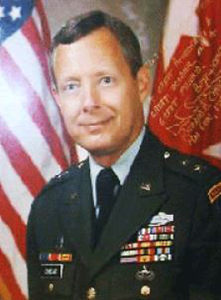 Richard Daniel Chegar
Richard Daniel Chegar
Major General Richard Daniel Chegar was born on February 4, 1940 in Kokomo. Indiana. General Chegar is a 1962 graduate of the United States Military Academy at West Point.General Chegar served as a Davy Crockett platoon leader, aide de camp and infantry platoon leader with the 173rd Airborne Brigade on Okinawa. He later rejoined the 173rd in Vietnam and served as the battalion adjutant and rifle company commander in the 1st Battalion (Airborne), 503rd Infantry.In May 1966 then Captain Chegar distinguished himself while serving as a company commander during a search and destroy mission near the village of Long Phuoc (FUC), Phuoc Tuy (FUC TIE) province, Republic of Vietnam. As Captain Chegar moved his company to begin the assault on the Viet Cong occupied village he deployed his platoon to take maximum advantage of the terrain. Having engaged the insurgent force Captain Chegar crawled back and forth across the battlefield to direct the fire and maneuver movements of his platoons. When one of his platoon leaders and two squad leaders were wounded by claymore mine fragments, Captain Chegar crawled forward through the intense fire to the aid of his platoon. He then reorganized the platoon and personally supervised the extraction of the wounded. In the early hours of the following morning, Captain Chegar led an assault on the village until the Viet Cong force was defeated. Captain Chegar’s extraordinary heroism in close combat is in keeping with the highest tradition of the military service.General Chegar’s awards and decorations include the Distinguished Service Medal, Silver Star, and Bronze Star with “V” Device, Meritorious Service Medal with three oak leaf clusters, and the Army Commendation Medal with one oak leaf cluster and is authorized to wear the Ranger tab.
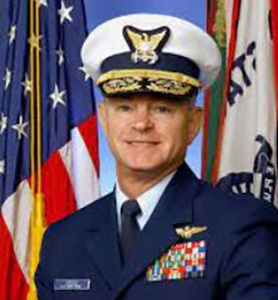 Terry Michael Cross
Terry Michael Cross
Terry Michael Cross entered the U. S. Coast Guard Academy in 1966 graduating in June 1970 with an engineering degree. Following 36 years of honorable service Vice Admiral Cross retired having served his final two years as Coast Guard Vice Commandant, the Coast Guard’s second in command. He also served as Deck Watch Officer, Aviator, Aircraft Commander, Chief of Aircraft Planning and Programming, Commanding Officer; and Chief of Staff, Pacific Area. Admiral Cross is credited with over 4,400 flight hours in single and multi-engine aircraft, jet aircraft and multiple helicopter types.
Following retirement from civilian employment he was a member of the Board of the Indiana War Memorial Foundation where he served as Vice President. While serving on this Board, Cross was elected President of the Indianapolis Armed Forces Day Council. He became a member of the Service Club of Indianapolis in 2012, and served as its Vice President from 2015-2016 and President from 2016-2017. He also served as Chairman of the Audit Committee for the Coast Guard Auxiliary Association.
Vice Admiral Cross’s awards and decorations include: the Air Medal, Coast Guard Distinguished Service Medal with two Gold Stars, Coast Guard Achievement Medal, the Coast Guard Commendation Medal with three Gold Stars, Legion of Merit with three Gold Stars and the Meritorious Service Medal with one Gold Star.
In November 2020, Cross was awarded the Major General Robert G. Moorhead Service Award by the Indianapolis Veterans Day Council for his outstanding contributions to the military community.
 Russell H. Dowden, Jr.
Russell H. Dowden, Jr.
Russell H. Dowden, Jr. was born in Bauxite, Arkansas on January 13, 1943 and currently resides in New Palestine. He is a retired United States Army Colonel having served 30 years in uniform. Colonel Dowden was a distinguished military graduate from Arkansas State in 1965 and received his commission in Field Artillery. He served in positions of command and staff throughout the Army and around the world to include small unit command in the 25th Infantry Division in Vietnam as a Forward Artillery Observer. He also served as the senior finance officer for the VII Corp commanding the 7th Finance Group in Saudi Arabia during Operation Desert Shield and Desert Storm. He served as the last Commandant of the U.S. Army Finance School on Fort Harrison.
After having been inducted into the Arkansas Military Veterans Hall of Fame in 2011, Colonel Dowden, in 2013, along with the help of other Indianapolis business associates, founded the Indiana Military Veterans Hall of Fame. Since its inception the Indiana Military Veterans Hall of Fame, including the Class of 2021, has inducted 113 Hoosier veterans. Through Colonel Dowden’s leadership the Indiana Military Veterans Hall of Fame, with distinction, has brought public recognition to the sacrifices of Indiana military veterans. The impact of an induction into the Indiana Military Veterans Hall of Fame for the Soldier, Sailor, Airman or Marine is immeasurable. The impact on the family is no less the same. The Indiana Millitary Veterans Hall of Fame would not exist if it were not for the leadership of Colonel Dowden and his vision to memorialize the accomplishments and sacrifices of Indiana’s veterans.
Colonel Dowden’s awards and decorations include the Silver Star, Defense Superior Service Medal, Legion of Merit (two awards), Purple Heart, Meritorious Service Medal (three awards) and Army Commendation Medal (two awards).
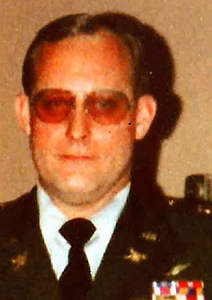 Michael Lee Drake
Michael Lee Drake
Michael Lee Drake enlisted in the United States Army in January 1964 and in the same year completed Airborne Paratrooper School earning the Parachute Badge. Completing Officer Candidate School in 1967 Second Lieutenant Drake was commissioned in the Infantry Branch. Lieutenant Drake completed flight school and earned his rotary aviator wings in 1968 and earned his qualifications as UH-1 Instructor Pilot in 1969.While serving in the Republic of Vietnam on April 22, 1970, Captain Drake was engaged in aerial flight in connection with military operations against a hostile force. Captain Drake distinguished himself by exceptionally valorous actions while serving aboard a transport helicopter flying advisory teams in and around Ben Tre. When an urgent call for a medevac was received, he immediately volunteered for the mission. Upon reaching the scene it was determined that a command detonated mine had exploded beneath a Jeep carrying two advisors. With complete disregard for his own safety Captain Drake approached the area knowing an ambush was likely. With the utmost accuracy and skill Captain Drake descended into the dangerously tight landing zone, extracted the wounded advisor and within a matter of seconds was enroute to a hospital. Through his courage and sound judgment Captain Drake’s action contributed immeasurably to the mission. His actions are in keeping with the highest traditions of the military service.Lieutenant Colonel Michael Drake retired from active duty in 1988. His awards and decorations include the Legion of Merit, Distinguished Flying Cross, Bronze Star, Meritorious Service Medal with two oak leaf clusters, Air Medal with twelve oak leaf clusters, Army Commendation Medal with two oak leaf clusters and the Army Commendation Medal with three “V” devices.
 Willard Douglas Gibbens
Willard Douglas Gibbens
Command Sergeant Major Willard Douglas Gibbens enlisted in the U.S. Army in 1966, and after serving stateside duty for training was released back to the Army Reserve. He served in the Army Reserve in a variety of units including Quartermaster, Chemical, Combat Engineer, Field Artillery, Medical, and non-aligned headquarter units until his retirement in 2001. In 1999, Gibbens was appointed as Army Reserve Ambassador for the State of Indiana, reporting directly to the Chief of the Army Reserve.Ambassador Gibbens has been the Region 2 President and Life Member of the Association of the United States Army; the State Vice Chairman, Ombudsman, and past Executive Director for Employer Support of the Guard and Reserve; the Veterans Day Council of Indianapolis; and Life Member of the American Legion, the Non-Commissioned Officers Association, the Reserve Officers Association and the 416th Association. He has been commissioned as an Honorary Alabama Colonel; the recipient of the Earl Rudder Award for his service to the Association of the United States Army, the Lieutenant General Timothy J. Maude Award for service to Indiana Soldiers and Army families.Command Sergeant Major Gibbens served in the Army’s highest enlisted rank for 18 years, including; the 416th Engineer Command; the 395th Combat Support Hospital; the 123rd Army Reserve Command; the 972nd Engineer Battalion; and the 472nd Chemical Battalion.Command Sergeant Major Gibbens’ decorations include the Legion of Merit, the Meritorious Service Medal with Oak Leaf Cluster, the Army Commendation Medal with Oak Leaf Cluster, the Army Achievement Medal.
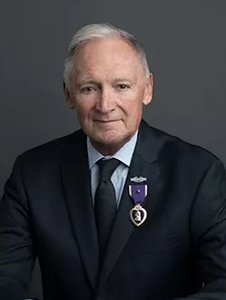 Douglas James Greenlaw
Douglas James Greenlaw
Douglas James Greenlaw as a platoon leader received a Brigade level promotion to Company Commander for Delta Company, 196th Light Infantry Brigade. He was wounded twice in the mountains, rice paddies and valleys west of Da Nang, Republic of Vietnam first as a platoon leader and second as company commander during the TET Offensive in 1968.On November 23, 1967, First Lieutenant Greenlaw distinguished himself while engaged against a hostile force while assigned to Company B, 3rd Battalion, 21st Infantry, 196th Infantry Brigade. After airlifting into a hot landing zone the entire company was pinned down by the NVA. The company plus mechanized elements from Troop F, 17th Cavalry, pushed into the tree line to push out of the landing zone. Lt. Greeenlaw displayed great courage as he moved back and forth along his line pointing targets to his men. In doing this he continually exposed himself to hostile fire. He sustained a leg wound by an enemy grenade shortly after the action began. This did not stop him from continuing to lend support and encouragement to his men and insuring that the wounded were evacuated. After being wounded he continued to move with his unit for another 200 meters through hostile fire. After this he aided in adjusting air strikes to his front and succeeded through these airstrikes in destroying two 57mm recoilless rifle positions which were firing on the mechanized elements in the company zone. After the enemy broke contact Lt. Greenlaw still did not go to the rear until his wounded were evacuated or accounted for. His actions were an encouragement to his men and were a significant factor in the outcome of the engagement.Lieutenant Greenlaw’s awards and decorations include the Silver Star, Bronze Star with “V” Device (two awards) and the Purple Heart (two awards).
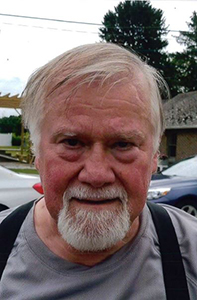 Wade Hampton Holt, Jr.
Wade Hampton Holt, Jr.
Wade Hampton Holt, Jr. initially joined the Army as an enlisted recruit but was later accepted into the United States Army Officer Candidate School receiving his commission as a Second Lieutenant in Field Artillery.Lieutenant Holt applied for helicopter training and later earned his wings flying the Cobra, the United States Army’s first attack helicopter. While serving in Vietnam Lieutenant Holt logged over 900 combat mission flight hours. Lieutenant Holt provided air support for Special Forces engaged in close combat with enemy forces by drawing ground fire toward his aircraft.These missions in Zone D, C, the Angels and Parrots Beak regions near the Vietnam/Cambodian border were extremely intense and were the critical factor in friendly forces winning the day to fight again. On three separate missions Lieutenant Holt’s Cobra was so riddled by enemy ground fire that a forced emergency landing was necessary due to the destruction of the hydraulic systems. During one mission Lt. Holt’s aircraft was struck by 50 caliber gunfire shattering the canopy with metal shrapnel striking his face and neck.Lieutenant Holt’s devotion to the mission and unwavering courage in the midst of life and death encounters with enemy forces saved innumerable lives and reflect great credit upon himself and the United States Army.While in the Southeast Asia Theater Lieutenant Holt was promoted to Captain. After being discharged from active duty Captain Holt joined the Army Reserves and was promoted to Major.
Major Holt’s awards and decorations include the Bronze Star, Distinguished Flying Cross, Air Medal (29 awards) and the Army Commendation Medal.
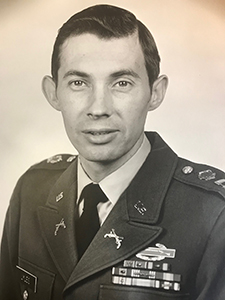 Roger W. Lyles
Roger W. Lyles
Roger W. Lyles’ service to the state and Nation began in June 1953 when he was assigned to the 152nd Infantry, Indiana National Guard where he served in Company L for five years before entering active duty in May 1958. He later received his commission as a Second Lieutenant in the Infantry and was later promoted to First Lieutenant.On July 11, 1967, First Lieutenant Lyles was leading his battalion’s reconnaissance platoon on an operation to secure the air strip at Quan Loi. During the early morning hours the friendly unit’s night defense perimeter received intensive mortar fire, followed by massive ground assaults from a numerically superior Viet Cong force. The insurgents breached the lines inflicting numerous casualties. Displaying outstanding leadership ability Lieutenant Lyles braved a hail of automatic weapons fire and shrapnel as he led his men in a counterattack. He continually exposed himself to the hostile fire as he deployed his men and directed their fire against the insurgents. Through his courageous actions his platoon was able to retake the friendly positions and drive the Viet Cong away from the perimeter into the line of fire of heavy machine guns, aircraft and artillery. During the fighting, the friendly forces passed a burning personnel carrier with crewmen trapped inside. With complete disregard for his personal safety, Lieutenant Lyles attempted to enter the vehicle to rescue the soldiers. He persisted in his efforts until the intense flames and exploding ammunition made it impossible to remain. His courage, determination and bold leadership contributed significantly to the rout of the Viet Cong force.Major Lyles’ awards and decorations include the Bronze Star with “V” device, Bronze Star (two awards), Army Commendation Medal (three awards) and the Air Medal (two awards).
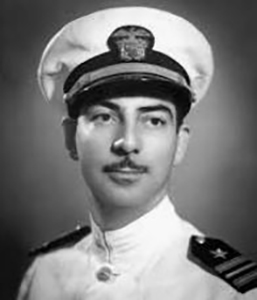 Melvin Harvey McCoy
Melvin Harvey McCoy
Rear Admiral Melvin Harvey McCoy was born in Indianapolis, Indiana on January 1, 1907. He attended Arsenal Technical High School graduating in June 1922. Admiral McCoy received his appointment to the United States Naval Academy graduating in June 1927.Admiral McCoy exhibited extraordinary heroism in connection with military operations against an armed enemy as a POW of the Japanese in the Philippine Islands from April 1943 through July 1943. Then Lieutenant Commander McCoy was one of ten men including two naval officers, three Air Corps officers and two Marine Corps officers who escaped their captors for days until connecting with Filipino guerillas. McCoy eluded patrols and made his way on foot and by small boat from the vicinity of Davao to northern Mindanao.After arrangements had been made for his evacuation he continued on foot through enemy territory. By using mountain trails he avoided capture and arrived at the rendezvous for evacuation by American submarines. Commander McCoy’s courage in the face of great danger and his fortitude despite his physical weakness enabled him to escape and rejoin the United States forces with information of great value.After his escape and duty as Commander of Naval Radio Activities in Port Blakely, Washington, McCoy was assigned as Executive Officer of the USS Cleveland and participated in the recapture of the Philippines. The USS Cleveland shelled suspected Japanese positions on the island of Corregidor, participated in the recapture of Borneo and the sweep of the East China Coastal Waters. Melvin McCoy retired as a Rear Admiral from the United States Navy in July 1957.Rear Admiral McCoy is the recipient of the Distinguished Service Cross and the Prisoner of War Medal.
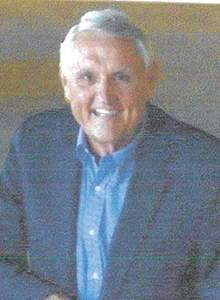 Dean Raymond Rush
Dean Raymond Rush
First Lieutenant Dean Raymond Rush distinguished himself by gallantry in connection with military operations against an opposing armed force in Southeast Asia on 15 August 1969. On that date, Lieutenant Rush was flying as a Forward Air Controller in an unarmed O-2A aircraft when he was called to the aid of a friendly long range reconnaissance patrol which had been attacked by a much larger hostile force. Despite heavy fire from seven anti-aircraft positions, he calmly and efficiently directed tactical air power in the destruction of five positions. Even though he sustained a hit to his aircraft he made low level rocket firing passes to slow the hostile assault when no tactical airpower was available.Captain Rush’s awards and decorations include the Silver Star, Distinguished Flying Cross, Meritorious Service Medal and Air Medal with eight oak leaf clusters.
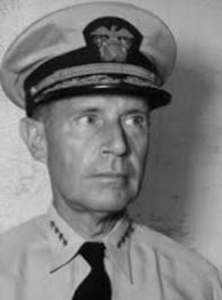 Raymond Ames Spruance
Raymond Ames Spruance
Admiral Raymond Ames Spruance was born on July 3, 1886. He was raised in Indianapolis and graduated from Shortridge High School in 1902 and in 2015 was inducted into the Shortridge High School Hall of Fame. He is a graduate of the United States Naval Academy Class of 1906 and the Naval War College in 1927.Admiral Spruance is best known for his leadership in the Pacific Theater during World War II as the Task Force Commander of United States Naval Forces during the Battle of Midway and the Battle of the Philippine Sea. At the Battle of Midway when Admiral Spruance received the report that four Japanese carriers had been spotted he ordered United States Navy aircraft to attack resulting in the destruction of the carriers and their aircraft. This is considered one of the greatest victories in the history of naval battles.In June 1944 during the amphibious invasion of the Mariana Island Admiral Spruance’s leadership enabled the United States Navy to win the Battle of the Philippine Sea and eliminated the Imperial Japanese Navy’s ability to conduct further large-scale carrier operations. This was the largest carrier-to-carrier battle in history involving 24 carriers and 1,350 carrier-based aircraft.From January to May 1945 as Commander Fifth Fleet Admiral Spruance was responsible for the operation of a vast and complicated organization which included more than 500,000 men of the Army, Navy and Marine Crops, 318 combat vessels and 1,139 auxiliary vessels. Carrier forces under his command penetrated the waters of the Japanese homeland and inflicted severe damage upon hostile aircraft, shore installations and shipping.In August 1945 following the capitulation of the Japanese, Admiral Spruance assumed command of the United States Pacific Fleet and Pacific Ocean areas. In February 1946 Admiral Spruance was appointed the President of the Naval War College. Admiral Spruance retired from active duty in July 1948.
Admiral Spruance is the recipient of the Navy Cross, the Navy Distinguished Service Medal with two stars, the Army Distinguished Service Medal and the Navy Commendation Medal. His professional skill, brilliant combat tactics and determination in carrying the fight to the enemy reflect the highest credit upon himself and the United States Naval Service.
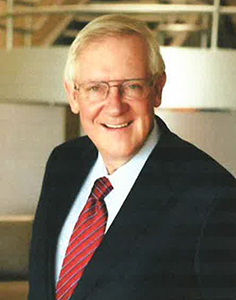 George Donald Steel
George Donald Steel
Captain George Donald Steel of Indianapolis received an appointment to the U.S. Naval Academy in 1971 and graduated with a General Engineering degree and a major in Soviet Studies in 1975. He was commissioned and reported to Patrol Squadron 10, working in Tactics and Training Departments while awaiting flight school training. He received his Naval Flight Officer designation in February 1977.He retired from the U.S. Navy after 31 years of active and reserve service which included deployment to Okinawa, the Philippines, Hawaii, and Japan. He was commander of Patrol Squadron 64, Willow Grove, PA, flying P-3 Orion (O-RYAN) anti-submarine aircraft on counter-narcotics missions in the Caribbean and Europe. He was also commander of Readiness Unit One, Columbus, OH Naval Reserve Center and Commander of Western Hemisphere Group Staff at Battle Creek, MI. He served as the Naval Emergency Preparedness Officer for Indiana until his retirement in August 2002.Since leaving active duty his community service contributions include the Indiana War Memorial Foundation, the Indiana Reservists of America, the U.S. Naval Academy Alumni; the Navy League of Indiana where he served as National Vice President, the American Legion Post 510, the Service Club of Indianapolis, the USO Council of Indianapolis, the Veterans Day Council of Indianapolis and the USS Indianapolis Survivors Memorial Campaign where he was responsible for raising $1.6 million. He served as Past-President of all of these organizations.Captain Steel’s awards and decorations include the Meritorious Service Medal with two Oak Leaf Clusters, two Awards of the Navy Commendation Medal as well as a number of service medals. In addition to his military awards, he is the recipient of the Sagamore of the Wabash, the Indianapolis Exchange Club Citizen-Soldier Award and the John Morton Finney Award for Public Service.
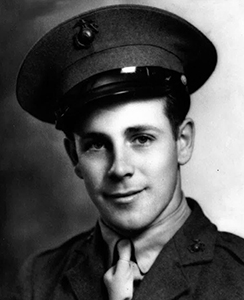 Kenneth Wayne Williams
Kenneth Wayne Williams
Kenneth Wayne Williams first saw combat action in the Marshall Islands while assigned to the 4th Marine Division. The Division landed on Saipan on June 15, 1944 and immediately experienced engagements with enemy forces. As the leader of a 60mm mortar section during the invasion of Saipan in June 1944 Corporal Williams demonstrated courage and bravery while under fire. During the battle on Saipan his commanding officer was severely wounded by enemy fire. Corporal Williams and a lieutenant voluntarily crawled to the top of the ridge while under heavy fire. As enemy shells traced their progress forward Corporal Williams and the lieutenant reached their commander and dragged him back to the rear saving his life. For his efforts under fire he was promoted to Sergeant.Sergeant Williams also saw action in February 1945 during the invasion of Iwo Jima, the greatest battle in Marine Corps history. Four days later following the initial invasion an enemy artillery shell hit near his mortar section resulting in a severe concussion wounding Sergeant Williams. Sergeant Williams was removed from combat action and sent back to the medical facilities for a lengthy recovery.Sergeant Williams’ awards and decorations include the Bronze Star (four awards) and the Purple Heart.
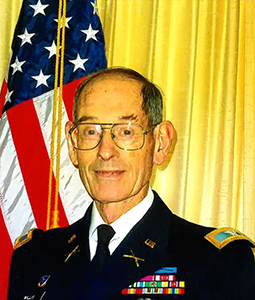 William Gerald Willis
William Gerald Willis
Colonel William Gerald Willis began his military career as a high school enlistee in the 29th Infantry Division in 1953. He was commissioned as a 2nd Lieutenant of Infantry in August 1958. Colonel Willis served a 30-year career as an officer in the Army National Guard, the U.S. Army Reserve and on active duty in positions as platoon leader through service in the Office of Secretary of Defense. He has been a rifle company commander, and a cavalry squadron commander, serving in the 29th Infantry Division, the 37th Infantry Division, the 100th Training Division, as well as staff positions, at Army Materiel Command, and the Pentagon.Colonel Willis not only served America with military distinction, but following retirement his local community and the State of Indiana. He organized “Liberty Day Indiana” and continues as its State Chairman providing the United States Constitution programs and booklets for 8th and 11th grade students. He is a frequent presenter at public and private schools wearing the uniform of the Continental Army Soldier.Bill is a former member of the French Lick-West Baden Chamber of Commerce Board of Directors and served on its Flag Committee for the past 30 years placing American Flags on the boulevard in French Lick and West Baden on holidays. Colonel Willis is the past President of the Indiana Reserves Organization of America and past Department National Councilman. He was Chairman of the Reserves Organization of America Global Affairs for 22 years providing both State and Federal speakers and Congress persons in educating its membership on federal and international issues lending more credence for veteran’s advocacy in assuring the public on a strong national defense.His numerous civilian awards include the Reserves Organization of America Department of Indiana Reserve Officers Nathan Hale Award, and the Indiana Lieutenant Governor’s Golden Hoosier Award.Colonel Willis’s awards and decorations include the Legion of Merit, the Meritorious Service Medal with two Oak Leaf Clusters and Army Commendation Medal with Oak Leaf Cluster. He is an Inductee into the Ft. Benning Officer Candidate School Hall of Fame and the 100th Division “Corridor of the Century” for exceptional service.
